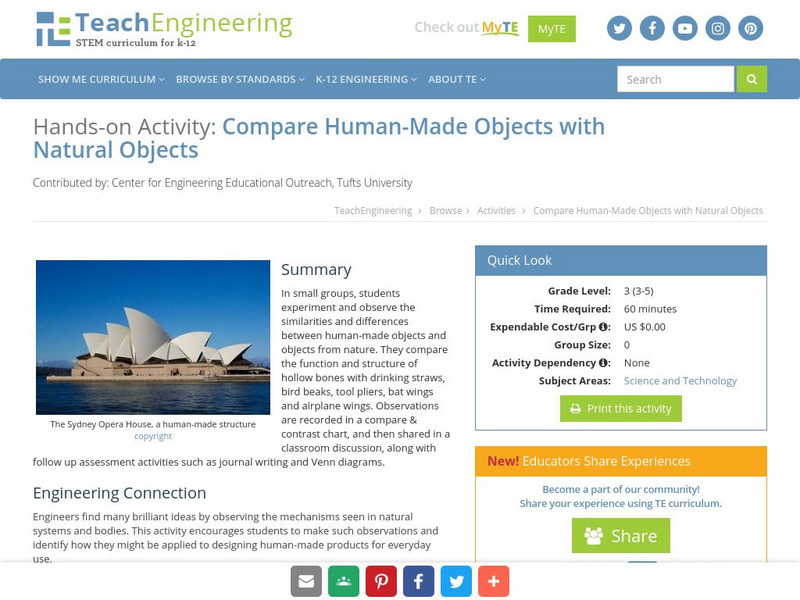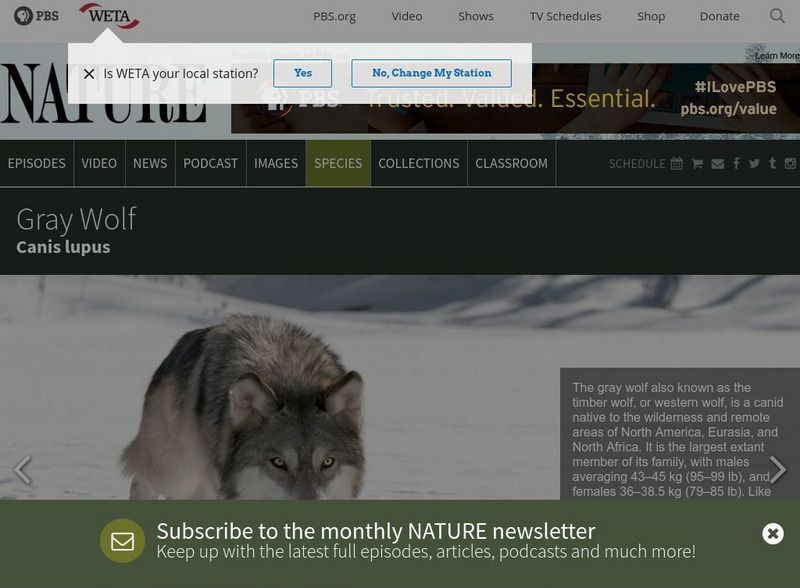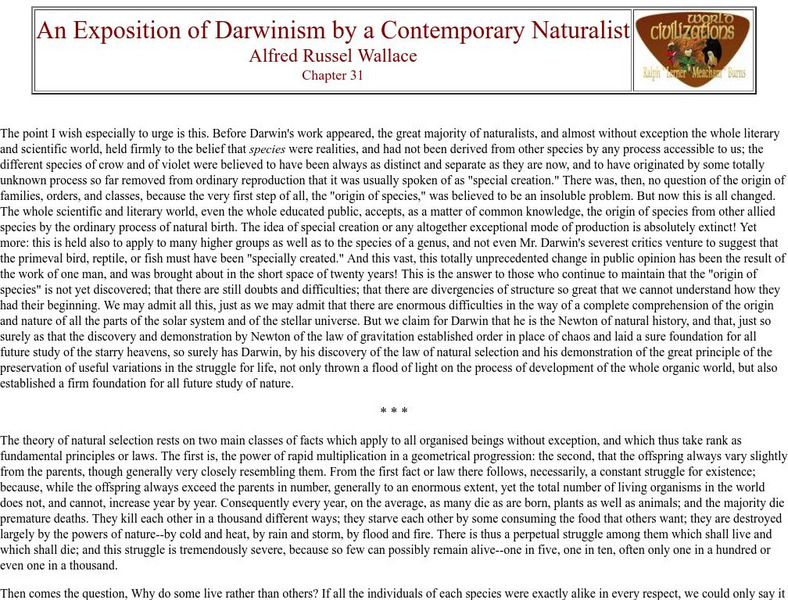TeachEngineering
Teach Engineering: The Benefits of Biodiversity
First, students toss coins to determine what traits a set of mouse parents possess, such as fur color, body size, heat tolerance, and running speed. Next they use coin tossing to determine the traits a mouse pup born to these parents...
TeachEngineering
Teach Engineering: Compare Human Made Objects With Natural Objects
In small groups, students will experiment and observe the similarities and differences between human-made objects and nature. The students will compare the function and structure of hollow bones with drinking straws, bird beaks, tool...
CK-12 Foundation
Ck 12: Biology: Principles of Biology
[Free Registration/Login may be required to access all resource tools.] Covers the four unifying principles of biology.
OneWorld UK
One World: Tiki the Penguin: Genetic Engineering: Whose Genes?
Come along with Tiki the Penguin as he discovers what makes you a human or him a penguin! This site details some of the major issues relative to genetics - such as genetic engineering - in a way that is interesting and relevant to kids.
CK-12 Foundation
Ck 12: Earth Science: Development of Theories
[Free Registration/Login may be required to access all resource tools.] Examines theories and laws in science.
Other
The Cave of Chauvet Pont D' Arc
The only way to see the prehistoric cave paintings at Chauvet-Pont-D' Arc, France is to take the virtual tour offered here. Learn about the discovery of the caves and the archaeological evidence found that allows great insight into the...
Other
Museum of Natural History
"Discover the natural wonders of Canada's east coast". Great links to the museum.
Other
Aclu: American Civil Liberties Union
Official home of the American Civil Liberties Union (ACLU). Learn about American news, what's going on with the Supreme Court and new legislation, and more at this online interest group.
Soft Schools
Soft Schools: Diversity Quiz
Take this interactive, multiple-choice quiz over ecological biodiversity, then review your score and any missed questions at the end.
Other
Natural History Museum of Denmark: Geological Museum
This site contains brief information about this natural history museum. Also contained are links to other museums (zoological, geological, botanical).
Other
Swedish Museum of Natural History
This resource can be viewed in Swedish or English. Some informational links are in Swedish only.
BioMan Biology
Bio Man Biology: Snurfle Islands
Create a Snurfle and see whether it can survive in different environments. As you play the game, you will learn about natural selection and animal adaptations. At the end of the game, try the multiple-choice quiz to check your...
BiologyWise
Biology Wise: Genetic Drift vs. Gene Flow vs. Natural Selection
Explains what genetic drift, gene flow, and natural selection are, and compares their differences, two at a time.
BiologyWise
Biology Wise: 4 Basic Modes of Speciation Show How Species Evolve
Explains what the four main modes of species formation are - allopatric, parapatric, peripatric, and sympatric speciation - and provides examples. A fifth possible mode, stasipatric speciation, is also discussed.
The Field Museum
Field Museum: Exhibits: Evolving Planet: Cambrian and Ordovician
This comprehensive exhibit provides a basic overview of the period, an image gallery of ancient ocean life, a look at the development of skeletons, and the emergence of animals with backbones. View an interesting video on how to become a...
CK-12 Foundation
Ck 12: Plix Series: Comparative Anatomy: Comparative Embryology
[Free Registration/Login Required] Match the animals with their embryos and answer questions about their evolutionary ancestry.
Concord Consortium
Concord Consortium: Stem Resources: Variations and Adaptations
Experiment with variations in grass to see which size grows best with different amounts of water. Understand that grass that can live in different levels and change to its environment has a better chance of surviving. Also, experiment...
TED Talks
Ted: Ted Ed: Why the Insect Brain Is So Incredible
Charles Darwin called the brain of the ant "one of the most marvelous atoms of matter in the world." Anna Stockl takes us inside the tiny but mighty insect brain. [4:22]
PBS
Pbs Nature: Gray Wolf
Gray wolves were a frequent sight on the American plains, however, they are now an endangered species despite attempts to reintroduce them to their former habitats in the continental United States. Learn about their natural history in...
University of Groningen
American History: Outlines: Outlines: Clash of Cultures
Although brief, this discussion of the clash of cultures in the 1920s covers all the reasons for cultural discordance.
CK-12 Foundation
Ck 12: Biology: Scientific Theories
[Free Registration/Login may be required to access all resource tools.] Explains scientific theories and introduces several famous theories in biology.
W. W. Norton
W.w. Norton & Company: Alfred Russel Wallace's Comments on Darwinism
An excerpt from "Darwinism: an Exposition of the Theory of Natural Selection with some of its Applications", by Alfred Wallace. He was a contemporary of Darwin who is credited as the co-developer of the theory of natural selection.
Khan Academy
Khan Academy: Activity: The Tree of Life Infographic
An activity for students to explore an infograph to compare the similarities and differences between human and other species.
Khan Academy
Khan Academy: Quiz: How Do Earth and Life Interact
Quiz yourself over the interaction between earth and life.


















